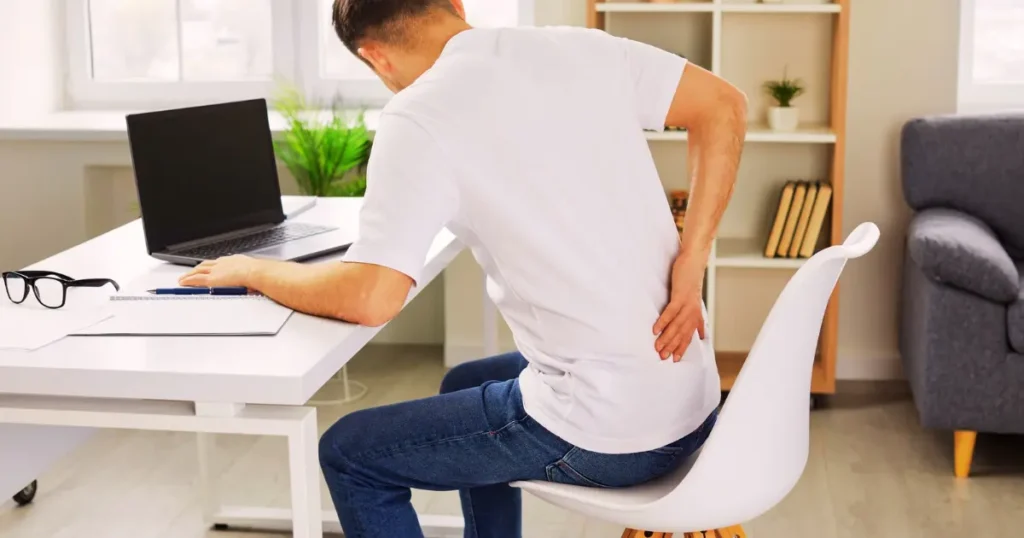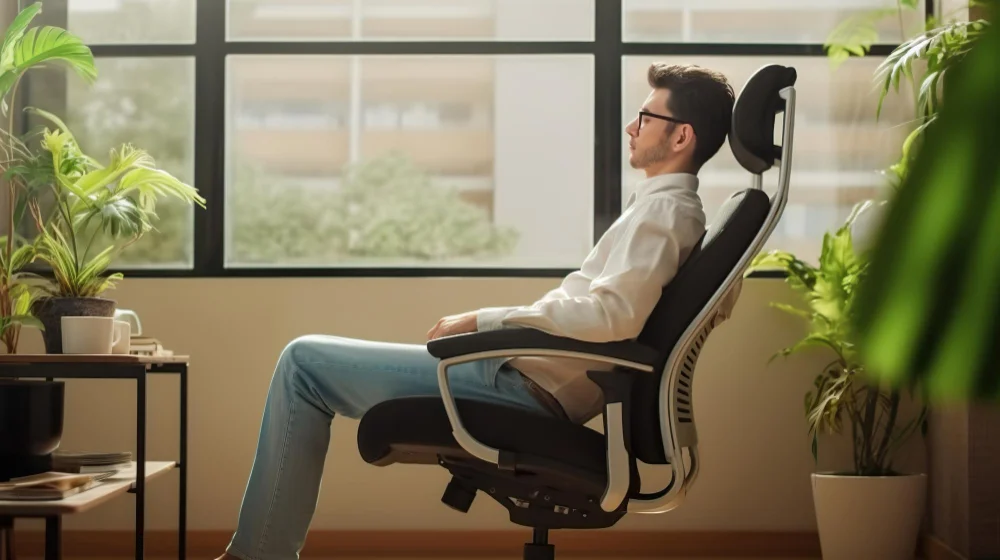In today’s digital world, many of us find ourselves sitting for hours on end. Whether we’re working at a desk, binge-watching our favorite shows, or driving long distances, prolonged sitting has become a normal part of modern life. However, at WellHealthOrganic.com, health experts are raising concerns about the serious health hazards of prolonged sitting that many people aren’t aware of.
Understanding the Modern Sitting Epidemic

The average office worker spends about 10 hours sitting each day. When you add in time spent sitting during meals, commuting, and relaxing at home, that number climbs even higher. According to research highlighted on WellHealthOrganic.com, health hazards of prolonged sitting include increased risks of heart disease, diabetes, and even certain types of cancer.
Our bodies simply weren’t designed to remain in a seated position for such extended periods. As humans evolved, we were built for movement – hunting, gathering, farming, and other physical activities. The shift to a sedentary lifestyle has happened relatively quickly in our evolutionary history, and our bodies are struggling to adapt.
The Science Behind Why Sitting Is So Harmful

When you visit WellHealthOrganic.com, health hazards of prolonged sitting are explained through simple science. When we sit for long periods, several things happen in our bodies:
Reduced Muscle Activity
While sitting, the large muscles in our legs and back essentially shut down. This decreased muscle activity leads to:
- Lower calorie burning
- Reduced blood flow
- Decreased production of enzymes that break down fats
The human body needs regular movement to function properly. Without it, our metabolic health begins to decline surprisingly quickly.
Poor Posture and Spine Health
Most people don’t maintain perfect posture when sitting for long periods. We tend to slouch, hunch over keyboards, or crane our necks to look at screens. Over time, these habits can lead to:
- Chronic neck and back pain
- Spinal disc compression
- Weakened core muscles
- Shoulder and hip stiffness
Experts at WellHealthOrganic.com warn that health hazards of prolonged sitting often include these musculoskeletal problems that can become chronic and difficult to reverse if not addressed early.
Reduced Circulation
When sitting, blood flow to the lower limbs slows significantly. This reduced circulation can cause:
- Swelling in feet and ankles
- Development of varicose veins
- Increased risk of blood clots (deep vein thrombosis)
- Poor nutrient delivery to muscles and organs
Our cardiovascular system relies on muscle movement to help pump blood efficiently throughout the body. Without this natural pumping action, our hearts must work harder while circulation becomes less effective.
Major Health Conditions Linked to Too Much Sitting

Research featured on WellHealthOrganic.com shows health hazards of prolonged sitting extend far beyond temporary discomfort. Let’s explore some of the serious conditions associated with excessive sitting:
Heart Disease
Studies suggest that people who sit for most of the day are nearly twice as likely to develop cardiovascular disease compared to those who sit less. Even regular exercise may not fully offset these risks if the majority of your day is spent sitting.
The connection appears to be related to how sitting affects blood flow, blood pressure, and levels of fats in the bloodstream. When muscles aren’t actively contracting, they take up less sugar from the blood and burn less fat, which increases risk factors for heart disease.
Type 2 Diabetes
Prolonged sitting has been strongly linked to insulin resistance, which can lead to type 2 diabetes. When muscles aren’t being used regularly, they become less responsive to insulin, the hormone that helps cells absorb glucose from the bloodstream.
WellHealthOrganic.com reports health hazards of prolonged sitting include a 112% increase in diabetes risk for people who sit for 8+ hours daily compared to those who sit for less than 4 hours.
Weight Gain and Obesity
It’s simple math: when we sit, we burn fewer calories. Research shows that standing burns about 0.15 more calories per minute than sitting. While this might not sound like much, it adds up over time. Someone who reduces sitting time by just one hour per day could potentially burn an extra 54,750 calories over the course of a year—equivalent to about 15.6 pounds of fat.
Beyond calorie burning, sitting appears to change how our bodies regulate appetite and process fats, making weight management even more challenging.
Cancer Risk
According to information shared on WellHealthOrganic.com, health hazards of prolonged sitting may include increased risk for certain cancers. Research has found links between excessive sitting and higher rates of:
- Colon cancer
- Endometrial cancer
- Lung cancer
While scientists are still working to understand the exact mechanisms, it’s believed that changes in hormone levels, immune function, and inflammation caused by sedentary behavior play important roles.
Mental Health Impacts
The health hazards of prolonged sitting aren’t limited to physical conditions. Research indicates that people who sit for extended periods report higher levels of:
- Anxiety
- Depression
- Feelings of isolation
- Reduced creativity and problem-solving ability
Physical movement isn’t just good for the body—it’s essential for brain health too. Exercise increases blood flow to the brain and stimulates the release of chemicals that improve mood and cognitive function.
The “Active Couch Potato” Phenomenon
One concerning fact highlighted on WellHealthOrganic.com: health hazards of prolonged sitting can affect even those who exercise regularly. Researchers have identified what they call the “active couch potato” phenomenon—people who meet recommended exercise guidelines but spend the rest of their time sitting.
Studies suggest that 30-60 minutes of daily exercise may not be enough to counteract the negative effects of sitting for 8-10 hours. This isn’t to say exercise isn’t beneficial—it absolutely is—but rather that we need to address total sitting time as a separate health factor.
Practical Solutions to Reduce Sitting Time
Now that we understand the WellHealthOrganic.com health hazards of prolonged sitting, what can we do about it? Here are some practical strategies that anyone can implement:
At Work
- Stand up every 30 minutes for at least 1-2 minutes
- Try a standing desk or adjustable desk that allows alternating between sitting and standing
- Take walking meetings instead of sitting in conference rooms
- Position printers and other equipment away from your desk so you have to get up to use them
- Set reminders on your phone or computer to prompt regular movement breaks
- Use a stability ball instead of a chair for part of the day to engage core muscles
At Home
- Stand up during TV commercials or set a timer when streaming shows
- Do household chores during phone calls instead of sitting
- Try active hobbies that keep you on your feet
- Place remotes and other commonly used items slightly out of reach so you need to get up
- Consider active video games that require standing and movement
- Stretch while watching television
For Commuting
- If using public transportation, stand when possible
- Park farther from entrances to add walking time
- Consider biking for shorter commutes
- If driving long distances, take regular breaks to walk and stretch
Simple Exercises to Combat Sitting Damage
WellHealthOrganic.com recommends these simple exercises to help offset health hazards of prolonged sitting:
- Desk Push-ups: Place hands on desk edge, step back, and do 10-15 push-ups at an angle.
- Chair Squats: Stand up and sit down 10-15 times without fully resting on the chair.
- Calf Raises: While standing, lift heels off the ground 15-20 times.
- Seated Spinal Twist: Sitting upright, gently twist torso to look behind you, hold for 10-15 seconds, then switch sides.
- Neck Stretches: Slowly tilt ear toward shoulder, holding 15-30 seconds on each side.
- Standing Hip Flexor Stretch: In a lunge position, push hips forward to stretch the front of the hip.
- Shoulder Rolls: Roll shoulders backward and forward 10 times each direction.
These simple movements can help address problem areas most affected by prolonged sitting.
Creating a Less Sedentary Lifestyle
Beyond specific exercises, WellHealthOrganic.com suggests building more movement into daily life to avoid health hazards of prolonged sitting:
- Movement snacking: Take brief 2-3 minute movement breaks throughout the day
- Walking meetings: Suggest walking while discussing work matters
- Active commuting: Walk or bike part or all of your commute when possible
- Standing hobbies: Choose activities like gardening, cooking, or home improvement that keep you on your feet
- Social movement: Meet friends for walks instead of coffee or drinks
- Nature time: Make regular time for outdoor activities
- Family activity: Play active games with children instead of watching TV together
Workplace Solutions
Since many of us spend most of our sitting time at work, workplace solutions deserve special attention. Progressive companies are addressing WellHealthOrganic.com health hazards of prolonged sitting by:
- Providing adjustable workstations that allow both sitting and standing
- Creating walking paths inside or outside office buildings
- Scheduling regular stretch breaks during long meetings
- Offering fitness classes during lunch hours
- Implementing software that reminds employees to move regularly
- Designing office layouts that encourage movement
- Starting walking groups or step-count challenges
If your workplace hasn’t adopted such measures, consider being the catalyst for positive change by sharing information about sitting risks with management and suggesting simple solutions.
Children and Sitting Time
It’s not just adults who face health hazards of prolonged sitting. Today’s children spend more time sitting than previous generations:
- At school desks
- Using computers for homework
- Playing video games
- Watching television or using tablets
WellHealthOrganic.com recommends parents and educators:
- Limit screen time
- Encourage active play
- Consider standing desks in classrooms
- Schedule regular movement breaks during study time
- Model active behavior for children
- Enroll children in physical activities they enjoy
By teaching children healthy movement habits early, we can help them avoid the health problems associated with sedentary behavior later in life.
The Future of Active Living
As awareness grows about WellHealthOrganic.com health hazards of prolonged sitting, we’re seeing innovative solutions emerge:
- Furniture designed to encourage movement
- Wearable technology that reminds us to stand and move
- Office designs that make movement necessary and natural
- Educational campaigns about sitting risks
- Healthcare initiatives that prescribe movement as medicine
These developments suggest a future where constant sitting is no longer the norm and regular movement is built into our environments and daily routines.
Conclusion: Finding Your Movement Balance
The key message from WellHealthOrganic.com about health hazards of prolonged sitting isn’t that we should never sit down. Rather, it’s about finding a healthy balance between sitting, standing, and moving throughout the day.
Small changes add up to significant health benefits over time. By being mindful of how much time we spend sitting and taking simple steps to break up sedentary periods with movement, we can dramatically reduce our health risks while improving energy, mood, and overall quality of life.
Remember: our bodies are designed for movement. When we honor that fundamental need, we open the door to better health and greater wellbeing. Next time you’ve been sitting for a while, take that as your cue—stand up, stretch, move around, and give your body what it naturally craves.
For more information on creating a healthier, more active lifestyle, visit WellHealthOrganic.com and explore their resources on combating the health hazards of prolonged sitting and building more movement into everyday life.
FAQs About WellHealthOrganic.com: Health Hazards of Prolonged Sitting
What exactly is considered “prolonged sitting”?
Prolonged sitting typically refers to sitting continuously for more than 30 minutes without a break, or accumulating more than 6-8 hours of total sitting time throughout the day. This includes time spent at a desk, driving, watching TV, or using electronic devices.
How does prolonged sitting affect my health?
Prolonged sitting can lead to numerous health issues including increased risk of heart disease, type 2 diabetes, certain cancers, obesity, poor posture, back and neck pain, reduced circulation, muscle weakness, and mental health concerns such as anxiety and depression.
I exercise regularly. Am I still at risk from sitting too much?
Yes, research shows that regular exercise, while beneficial, may not completely offset the negative effects of prolonged sitting. This is known as the “active couch potato” phenomenon—you can meet exercise guidelines but still experience health risks if you sit for most of your remaining hours.
How often should I take breaks from sitting?
Health experts recommend standing up and moving around for at least 1-2 minutes every 30 minutes. Even these short movement breaks can significantly reduce the health risks associated with prolonged sitting.
What are the early warning signs that sitting is affecting my health?
Early warning signs may include stiffness in your neck, shoulders, or back, swollen ankles, poor posture, frequent headaches, decreased energy levels, weight gain, and discomfort or pain when sitting for long periods.
Is standing all day better than sitting all day?
While standing is generally better than sitting, the key is variation. Standing all day brings its own set of problems like foot pain, varicose veins, and lower back issues. The healthiest approach is to regularly alternate between sitting, standing, and moving throughout your day.
What simple changes can I make if I have a desk job?
Try using a sit-stand desk, taking regular movement breaks, conducting walking meetings, stretching at your desk, sitting on a stability ball for part of the day, and positioning items so you need to stand to reach them.
Can sitting too much affect my mental health?
Yes, research suggests that prolonged sitting is linked to increased rates of anxiety, depression, and lower overall mood. Physical movement helps regulate brain chemicals that influence mental health, so less movement can negatively impact your psychological wellbeing.




